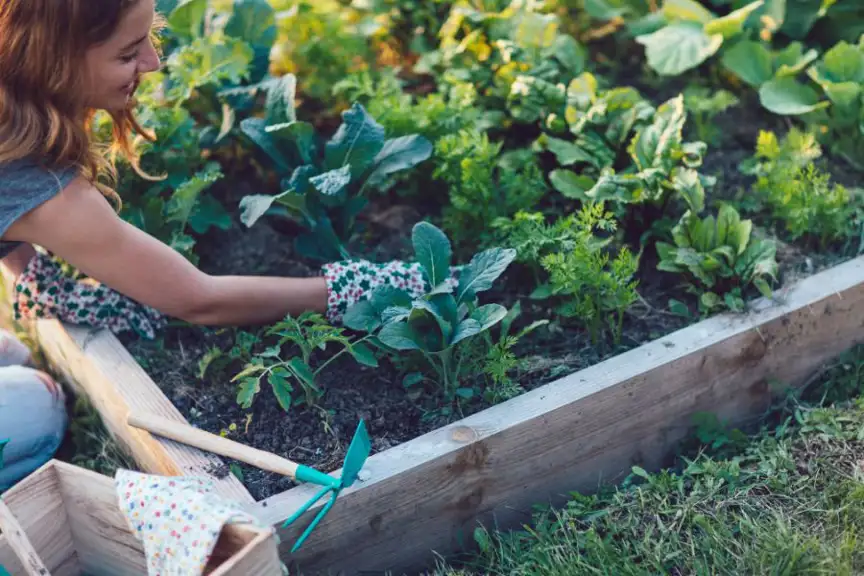Autumn is the Perfect Time for Planting
Autumn's mild weather and warm soil create an ideal time for planting. From the prettiest flowers to the tastiest fresh vegies, there are lots of fantastic options to sow and grow during autumn. Let's dig in!

Autumn's mild weather and warm soil create an ideal time for planting. From the prettiest flowers to the tastiest fresh vegies, there are lots of fantastic options to sow and grow during autumn. Let's dig in!

Just like a strong foundation is essential for building a house, a thriving garden begins with healthy soil. It's as easy as adding Yates Dynamic Lifter Soil Improver & Plant Fertiliser to the soil or planting hole. This simple step revitalises and nourishes your soil, giving new autumn plants the perfect start they need to flourish.
Yates Dynamic Lifter Soil Improver & Plant Fertiliser is packed with organic matter, which helps improve water and nutrient retention, enhances soil structure, and promotes earthworms and beneficial microorganisms.
To help maintain organic matter levels in the soil and provide plants with gentle slow-release organic nutrients, reapply Yates Dynamic Lifter around established plants every 6-8 weeks during the growing and flowering seasons.
In the vegie patch, we're spoilt for choice! Sow seeds of climbing peas like Yates Sugarsnap Peas and Yates Snow Peas next to a trellis or teepee they can twine up. Grow nutritious Yates Baby Leaf Spinach, Yates Asian Stir Fry, Yates Silverbeet Fordhook Giant and Yates Lettuce Baby Combo to keep your kitchen stocked with leafy ingredients for salads and stir fries.

Plant brassicas, like Broccoli, Chinese Broccoli (Kailaan), Brussels Sprouts, Cabbage and Cauliflower, which thrive in the cooler weather. Monitor for Snails and Slugs, which can rapidly devour young seedlings. A light sprinkling of Yates Snail & Slug Bait around the plants will help keep them protected.

Grow your very own flavoursome Garlic by planting cloves, pointy end up, four centimetres deep in a sunny well-drained spot. Once shoots emerge, feed the plants every one-to-two weeks with Yates Thrive Vegie & Herb Liquid Plant Food to promote lots of leafy growth and good-sized Garlic bulbs.

Brighten the coolest months by planting flowers like Pansies, Violas, English Daisies, Calendula and Dianthus. They'll look divine planted in groups throughout the garden or mass planted in garden beds. They also look great in pots or hanging baskets. Deadhead regularly and liquid feed with Yates Thrive Roses & Flowers Liquid Plant Food to encourage more blooms.


Choose your favourite Camellia from your local garden centre while it's in full bloom. It's also a great time to select a deciduous tree as they'll be clothed in their richly coloured autumnal foliage. Crepe Myrtles and compact Japanese Maples are ideal for smaller backyards and provide summer shade and let the winter sunshine in.
If you're looking for evergreen trees, consider fruit trees like Citrus, Feijoa (Pineapple Guava) or Olive. For Australian natives, try like Banksia, Grevilleas or Lemon Scented Myrtle (Backhousia citriodora).
If there are bare patches of soil after your last harvest, consider growing a green manure crop. These crops are grown specifically to improve soil health and fertility. By planting green manure crops in autumn, you can protect your soil from erosion, suppress weed growth, and add organic matter when they are dug back into the soil. Additionally, some green manure crops can help fix nitrogen in the soil, improving its nutrient content for future plantings.
For more information on improving your soil for autumn planting, head to our Beginner's Guide to Soil & Soil Improvement.


Choose a suitable spot in the garden with well-drained soil. Prepare the area well by digging in Yates Dynamic Lifter Soil Improver & Plant Fertiliser.
Dig the planting hole twice as wide and to the same depth as the root ball. Remove the plant from the container, gently tease the roots, cutting away any circled or tangled roots. If the plant has been in the pot for some time, the roots may be clinging to the sides, making it difficult to remove. Running a knife blade down the side between pot and mix may help, as can turning the pot on its side and gently rolling it back and forth on a hard surface.
Position in hole and backfill with soil, gently firming down. Form a raised or doughnut shaped ring of soil around the outer edge of the plant's root zone. This helps keep water where it's needed.
Always water in well after planting to settle the soil around the roots and keep the soil moist for several weeks while the new plant establishes. To help reduce transplant shock, water in with Yates Dynamic Lifter Liquid.
Mulch around the base with organic mulch, like pine bark or sugar cane mulch, keeping it away from the trunk. This will help retain soil moisture and suppress weed growth.
